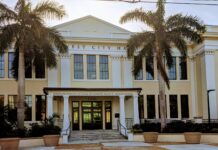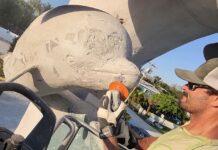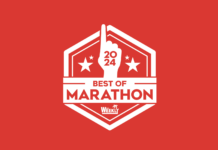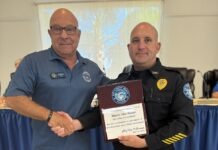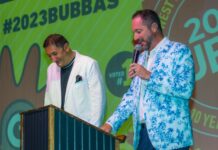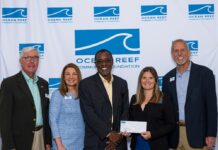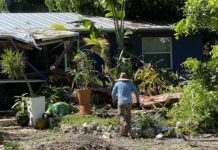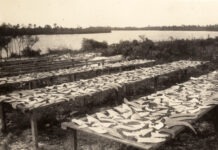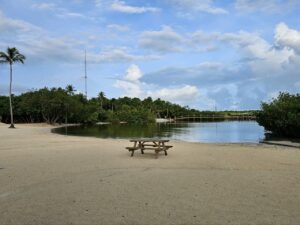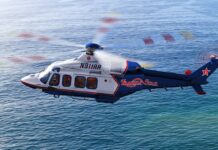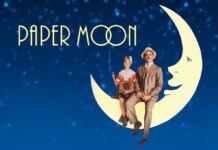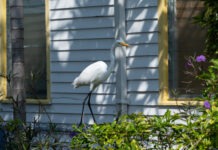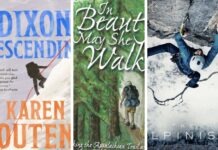I was having a nice conversation with someone at a party the other night when she stumped me with a very simple question: What’s your favorite book about birds?
I should have had a stock answer, but instead spent a few minutes stammering until I realized I did not know what my favorite bird book was.
Part of my issue is I don’t think I have a favorite anything. I mean, there are things I like, and I guess what I would call zones of favor – and there’s definitely an inner zone of things that turn out to be important to me and what I like and how I think, things I just freaking love. But ranking them and picking a winner?
I remember coming back from a museum and talking to someone about how much I liked, say, an early Van Gogh painting I’d seen, and having him tell me how superior he thought, say, Manet was. And I was like, it’s not a sack race. Art isn’t a hierarchy. It’s personal. What speaks to you speaks to you. What doesn’t, doesn’t. (The one exception, in my case, is the movie, “The Life Aquatic with Steve Zissou,” but that’s just because it’s the finest movie ever made. And I can only pity people who are blind to this fact.)
Still, in the interest of answering the question for myself, I thought I’d put some thought into it.
My first impulse was, “The Sibley Guide to Birds of Eastern North America,” a classic field guide whose title is a mouthful. Most people just refer to it as “Sibley.” It’s a subset of the species found in “The Sibley Guide to Birds,” which most people also refer to as “Sibley.” (You might say “Eastern Sibley” if you were talking to someone from the west side of the country.)
I started out birding with the similarly long-titled “Peterson Field Guide to Birds of Eastern & Central North America,” which most people also just refer to as “Peterson.” People have affinities for other field guides, such as “A Guide to Field Identification Birds of North America,” which most people refer to as “The Golden Guide” because of its historic publishing imprint, which has always had a strong band of loyalists.
But the Sibley guide came out in my early years as a birder, or at least thinking of myself as one. It was new when I was new. So for me it’s kind of like one of those songs you imprinted on when you were first finding your way in the world, like Bob Mould’s “See A Little Light” or Lyle Lovett’s “Walk Through The Bottomland.” But also, it’s an amazingly good field guide.
Sibley paints birds impressionistically. He doesn’t get bogged in details, but highlights the things you should look for that make each species unique. He elevates your perception. Which is a lot for a book you can slip into your back pocket. (I’m actually on my second copy, because I wore out my first.)
In the just-the-facts-ma’am bird book department, I’m also pretty fond of “The Birder’s Handbook.” It is a literal brick of a book – 786 pages in softcover with a volume similar to a loaf of banana bread. It came out in 1988. My wife gave me a copy in 1997, and I smiled politely and thought, what am I ever going to do with this heaping tome? It’s not the kind of thing you can sit down and read.
But I certainly warmed up to it. Basically, each left-facing page has two species accounts, which give you the lowdown on where each species breeds, what they eat, how many eggs they lay, where they build their nests, etc. It also gives a list of short essays relevant to that species. The right-facing pages contain those essays, which tend to be concise and well written, explaining such pertinent concepts as nonvocal sounds, copulation, cooperative breeding, disease and parasitism, and mixed-species flocking, as well as biographies of important ornithologists and other historic facts.
A book that at first seemed like drinking from a firehose is actually a pool you can dip into whenever so inclined. Sadly, the book is out of print, and the copy my wife gave me is falling apart, with pages falling out of the binding in chunks big and small. But luckily, when I was up at my mother-in-law’s place this fall, she pulled a copy in good condition and asked if I had any use for it. (Thanks, Sally!)
Some of my other favorite books are more narrative in structure. Among them is Kenn Kaufman’s “Kingbird Highway,” which is his account of dropping out of high school in 1973 and hitchhiking around the U.S. and Canada, trying to see as many birds as possible, something that came to be known in birding circles as a Big Year. It’s a good adventure story, a good coming-of-age story, and some fine insight into the mind of an obsessive birder.
I’m also fond of Mark Obmascik’s narrative book, “The Big Year,” which is about three birders trying to set the Big Year record in 1998. Most people are probably more familiar with the somewhat cartoonish movie starring Steve Martin, Jack Black and Owen Wilson, but the movie is so broad it feels as if it could be about any niche obsession – stamp collecting, ice sculpting, duck herding, geocaching, whatever. The book is more about the nitty gritty of what it’s like to give up your life for a year to see as many species as possible, and gives a much better feel for what that compulsion actually is.
The last book I’ll add – “Song of the Dodo” by David Quammen – isn’t really a book about birds. Technically it’s about island biogeography, which sounds heady, but is really just about the process of geographic isolation and how, over time, it can cause one species to become two or more. But there are a lot of birds in it. And Quammen is just an immensely entertaining writer, capable of drawing you in to very complicated subject matter in a way that actually makes you feel enlightened.
Re-reading this list, I’m realizing almost all these books are at least 20 years old. There are a slew of other, probably pretty good books out there. Looks like I need to do some catching up.

